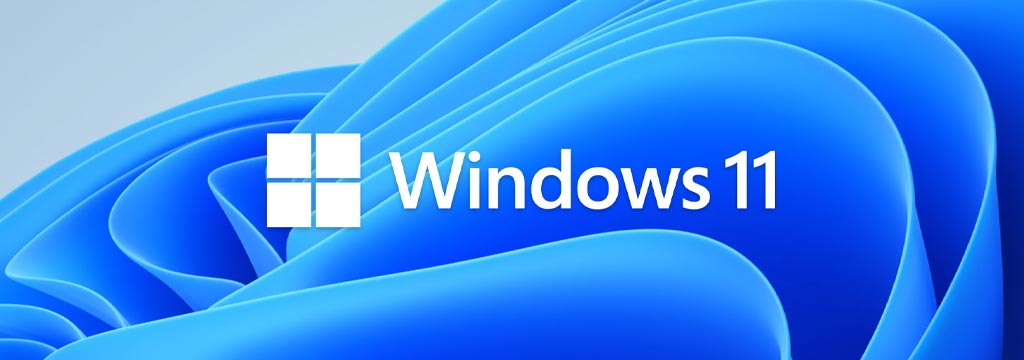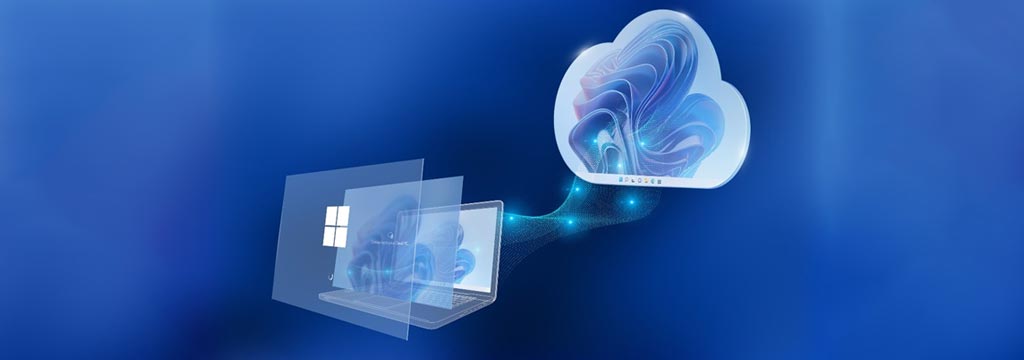Microsoft announced the release of Windows 11 at the end of June. Only weeks later, they followed with a surprise introduction of Windows 365, a subscription service that takes the operating system to the cloud.
Microsoft designed Windows 11 for businesses, keeping IT managers and the new hybrid working era in mind. In this article, we will review the features and benefits of both and explain the differences between them.
- What is Windows 11?
- New features for Windows 11
- What is Windows 365?
- What is a Cloud PC: How does Windows 365 work?
- Microsoft brings Windows 10 and 11 to the cloud
- What is the difference between Windows 365 and Windows 11?
- How can Windows 365 help your business?
- Three ways Windows 365 will help any organisation
- Key differences between Windows 365 and Windows 11:
What is Windows 11?
Windows 11 is the latest version of the Windows operating system. After six years of the same user interface, Windows 10’s successor has undergone a complete makeover, launching a fresher, more minimalist style than its precursors.
Microsoft describes Windows 11 as a “calm and creative space” that “brings you closer to the people and things you love.” Over the last 15 months, our devices have often been the only place to work, connect, play, be entertained and stay informed. Undoubtedly, this has influenced Microsoft’s goal of making these areas intuitive and easy to switch between.

Photo credit (Microsoft) – https://news.microsoft.com/june-24-2021/
New features for Windows 11
- The start menu has been refreshed and now opens from the taskbar’s centre.
- Live tiles have disappeared, and they have been replaced by widgets for news, weather, and calendar events.
- Adding desktops helps you stay organised and focused by creating separate, customisable desktops for every part of your life.
- Snap Layouts allows you to open multiple Windows simultaneously in your chosen layout and adapt to your screen size. At the same time, Snap Groups remembers collections of apps you have used and keeps them for you so you can return to them later.
- Microsoft built Teams into Windows 11 devices so you can connect directly to your contacts from your desktop. Vertical tabs make finding what you are looking for more accessible, so you don’t get lost in several tabs.
- Updates are 40% smaller and occur in the background for fewer interruptions.
Microsoft did not release a specific date, but they said it will arrive during the 2021 holiday season. However, we expect this only to be when new laptops and PCs with Windows 11 pre-installed will be available to buy. Users who want to upgrade their existing Windows devices will likely have to wait until 2022.
What is Windows 365?
Windows 365 is a cloud-based operating system. It’s Microsoft’s latest service offering, which they refer to as a ‘Cloud PC’. It “combines the power and security of the cloud with the versatility of the PC” and allows employees to access their desktops virtually rather than rely on a physical device.
Influenced by the pandemic’s colossal change in our relationships with work and technology, Microsoft created Windows 365 exclusively for companies to make hybrid work easier and more productive. Their service reduces the security risks associated with working from home or using personal devices, as it stores information in the cloud, not on the device itself.
What is a Cloud PC: How does Windows 365 work?
Windows 365 is used and appears in the same way as the traditional Windows operating system but is accessed and managed via your Internet browser or the Microsoft Remote Desktop app.
You can store your entire desktop in a secure data centre, not on your device. The CEO of Microsoft said the following in a recent statement:
“Just as applications have been brought to the cloud with software-as-a-service, we are now bringing the operating system to the cloud, giving organisations greater flexibility and a secure way to enable their workforce to be more productive and connected, regardless of location.“
Microsoft CEO Satya Nadella
Microsoft brings Windows 10 and 11 to the cloud
Microsoft brings Windows 10 and 11 to the cloud with the recently announced Windows 365. The service will provide businesses of all sizes a new way of experiencing Windows, promising a personalised PC experience from the cloud to any device that is easy to use and just as effortless for IT to manage.
What is the difference between Windows 365 and Windows 11?
The main difference is that Windows 11 is a traditional operating system that anyone can buy and install on their computer. At the same time, Windows 365 is a subscription service that allows companies to stream Windows 11 (or Windows 10) from the cloud to any device.
How can Windows 365 help your business?
The pandemic transformed thousands of workers’ work habits worldwide through virtual processes and remote collaboration. Microsoft is capitalising on the power of the cloud with Windows 365, which is firmly aimed at business users who have transitioned to a hybrid workforce to elevate the workplace experience.
Jared Spataro, corporate vice president of Microsoft 365, said hybrid work has fundamentally changed the role of technology in organisations today. With workforces more disparate than ever, organisations need a new way to deliver a great productivity experience with increased versatility, simplicity, and security.
Cloud PC is an exciting new category of hybrid personal computing that turns any device into a personalised, productive, and secure digital workspace. The announcement of Windows 365 is just the beginning of what will be possible as we blur the lines between the device and the cloud.
Three ways Windows 365 will help any organisation
Microsoft aimed to revolutionise how organisations use Windows 365, offering a flexible and efficient solution for various business needs. Here are three ways Windows 365 will benefit any organisation:
Flexibility:
With instant-on boot to their personal Cloud PC, users can stream all their applications, tools, data, and settings from the cloud across any device. Windows 365 will provide the whole PC experience in the cloud.
The cloud also offers versatility in processing power and storage, enabling IT to scale up or down based on their needs. Users can choose between Windows 10 and 11 (once Windows 11 becomes available later this year).
Simplicity:
With a Cloud PC, users can effortlessly log in and pick back up where they left off across devices, providing a straightforward and familiar Windows experience delivered by the cloud. For IT, Windows 365 also simplifies deployment, updates, and management.
Security:
Microsoft claims that Windows 365 is secure by design, leveraging not only the power of the cloud but also the principles of Zero Trust. It stores information securely in the cloud, not on a device. Microsoft will reveal Windows 365 pricing when the service becomes generally available on August 2, 2021.
Key differences between Windows 365 and Windows 11:
- You have installed a traditional operating system like Windows 11 on your device, which consumes RAM and storage space. Windows 365, on the other hand, does not take up any space on your device, as it stores everything in the cloud, but it requires an Internet connection to run.
- Windows 10 and 11 are pre-installed on your devices, or you can buy a license, and it’s yours to keep forever. Windows 365, on the other hand, operates on a subscription model, so you rent your desktops essentially. This could be helpful if you hire freelancers or temporary workers, as you can quickly set up their new cloud PC and secure access to company data without needing long-term investments.

Lets Talk!
If you have additional comments or questions about this article, you can share them in this section.
I have Mocrosoft 365 and I don’t like it. Can I cancel this? I had Windows 10. Is Windows 10 still downloaded on my computer or did Microsoft 365 erase it?
Hi Beverly
Microsoft 365 is a subscription service that includes various applications and services, while Windows 10 is an operating system. Cancelling your Microsoft 365 subscription won’t affect your Windows 10 installation.
If you’re not satisfied with Microsoft 365, you can cancel your subscription through your account settings. Your Windows 10 operating system will remain intact on your computer.
Does downloading Microsoft 365 interfere with programs already installed on my computer as Office 11?
Hi Sandra
When you download and install Microsoft 365, it typically replaces any previous versions of Microsoft Office that you have installed on your computer, including Office 11. This means that once Microsoft 365 is installed, it becomes your primary Office suite, and the older version you had (Office 11 in this case) would no longer be used.
However, Microsoft 365 includes most of the same programs and features as older versions of Office, so you should still be able to perform the same tasks and use similar applications without much disruption. Additionally, Microsoft 365 often offers more updated features, security patches, and integration with cloud services compared to older versions of Office.